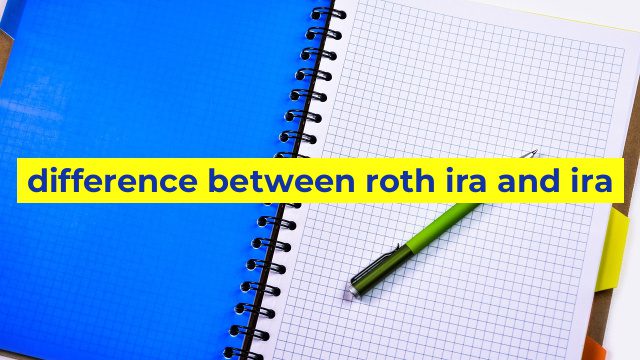Understanding the Difference between Roth IRA and IRA
When it comes to planning for retirement, it’s vital to consider the different retirement accounts available. Two of the most commonly talked-about accounts are Roth IRA and IRA. While both accounts help individuals save for their retirement, there are distinct differences between them. In this article, we’ll explore the differences between Roth IRA and IRA.
What is an IRA?
An IRA (Individual Retirement Account) is a type of personal savings account that people can use as one of their retirement savings vehicles. People use IRAs to invest in various assets with the goal of earning returns. The contributions you make to your IRA are tax-deductible, and you pay taxes on the withdrawals made after retirement. There are two types of IRA available: Traditional IRA and Roth IRA.
What is a Roth IRA?
Roth IRA is also a type of personal savings account intended to assist with retirement planning. However, the primary difference here is that the contributions you make to your Roth IRA account are after-tax – meaning you pay taxes on your contributions before depositing them into your account. On the other hand, withdrawals made during retirement are tax-free. It is worth noting that there are income restrictions on who can contribute to a Roth IRA.
The Differences between Roth IRA and IRA
One primary difference between Roth IRA and IRA is the tax treatment on contributions and withdrawals. With a Traditional IRA, contributions are tax-deductible, meaning you only pay taxes on withdrawals. With a Roth IRA, contributions are after-tax, meaning withdrawals are tax-free. Another significant difference is the age limit for a Traditional IRA; you must end all contributions by the age of 70.5 years, while there is no such limit on a Roth IRA.
The contribution limit on both Roth IRA and IRA is $6,000, with an additional catch-up contribution of $1,000 for people aged above 50. However, Roth IRA has income restrictions, and not everyone is eligible to contribute to it. On the other hand, there are no income limits on a traditional IRA.
Conclusion
Retirement planning is crucial, and the choice of the best retirement accounts is vital. Traditional IRA and Roth IRA are two popular options, and the choice depends on various factors such as income level, tax bracket, and investment goals. Understanding the differences between these accounts will assist individuals in making informed decisions, which align with their retirement goals.
Table difference between roth ira and ira
| Feature | Roth IRA | Traditional IRA |
|---|---|---|
| Taxation | Contributions are made with after-tax dollars, and qualified withdrawals are tax-free. | Contributions may be tax-deductible, and withdrawals are taxed as ordinary income. |
| Income Limits | Contributions are limited based on income level. | No income limits. |
| Age Limits | No age limits for contributions or withdrawals. | Contributions must stop at age 70 1/2, and required minimum distributions must begin at age 72. |
| Withdrawal Rules | Qualified withdrawals may be made tax-free and penalty-free after five years or age 59 1/2. | Withdrawals before age 59 1/2 may result in a penalty, and required minimum distributions must begin at age 72. |
| Contribution Limits | For 2021, the contribution limit is $6,000 ($7,000 if age 50 or older). | For 2021, the contribution limit is $6,000 ($7,000 if age 50 or older). |

